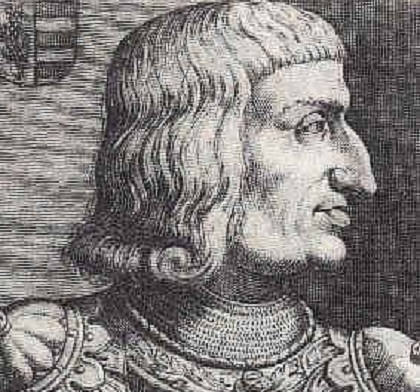
The Golden Bull of 1356, an edict promulgated by Emperor Charles IV (r. 1355-78) of the Luxemburg family, provided the basic constitution of the empire up to its dissolution. It formalized the practice of having seven electors–the archbishops of the cities of Trier, Cologne, and Mainz, and the rulers of the Palatinate, Saxony, Brandenburg, and Bohemia–choose the emperor, and it represented a further political consolidation of the principalities. The Golden Bull ended the long-standing attempt of various emperors to unite Germany under a hereditary monarchy. Henceforth, the emperor shared power with other great nobles like himself and was regarded as merely the first among equals. Without the cooperation of the other princes, he could not rule.
Despite the lack of a strong central authority, Germany prospered during the 14th and 15th centuries. Its population increased from about 14 million in 1300 to about 16 million in 1500, even though the Black Death killed as much as one-third of the population in the mid-fourteenth century.
Located in the center of Europe, Germany was active in international trade. Rivers flowing to the north and the east and the Alpine passes made Germany a natural conduit conveying goods from the Mediterranean to northern Europe. Germany became a noted manufacturing center. Trade and manufacturing led to the growth of towns, and in 1500 an estimated 10 percent of the population lived in urban areas. Many towns became wealthy and were governed by a sophisticated and self-confident merchant oligarchy. Dozens of towns in northern Germany joined together to form the Hanseatic League, a trading federation that managed shipping and trade on the Baltic and in many inland areas, even into Bohemia and Hungary. The Hanseatic League had commercial offices in such widely dispersed towns as London, Bergen (in present-day Norway), and Novgorod (in present-day Russia). The league was at one time so powerful that it successfully waged war against the king of Denmark. In southern Germany, towns banded together on occasion to protect their interests against encroachments by either imperial or local powers. Although these urban confederations were not always strong enough to defeat their opponents, they sometimes succeeded in helping their members to avoid complete subjugation. In what was eventually to become Switzerland, one confederation of towns had sufficient military might to win virtual independence from the Holy Roman Empire in 1499.
Intellectual growth accompanied German expansion. Several universities were founded, and Germany came into increased contact with the humanists active elsewhere in Europe. The invention of movable type in the middle of the fifteenth century in Germany also contributed to a more lively intellectual climate. Religious ferment was common, most notably the heretical movement engendered by the teachings of Jan Hus (ca. 1372-1415) in Bohemia. Hus eventually was executed, but the dissatisfaction he felt toward the established church was shared by many others throughout German-speaking lands, as could be seen in the frequent occurrences of popular, mystical religious revivalism after his death.
Related articles:
– The Merovingian Dynasty, ca. 500-751
– The Carolingian Dynasty, 752-911
– The Saxon Dynasty, 919-1024
– The Salian Dynasty, 1024-1125
– The Hohenstaufen Dynasty, 1138-1254
